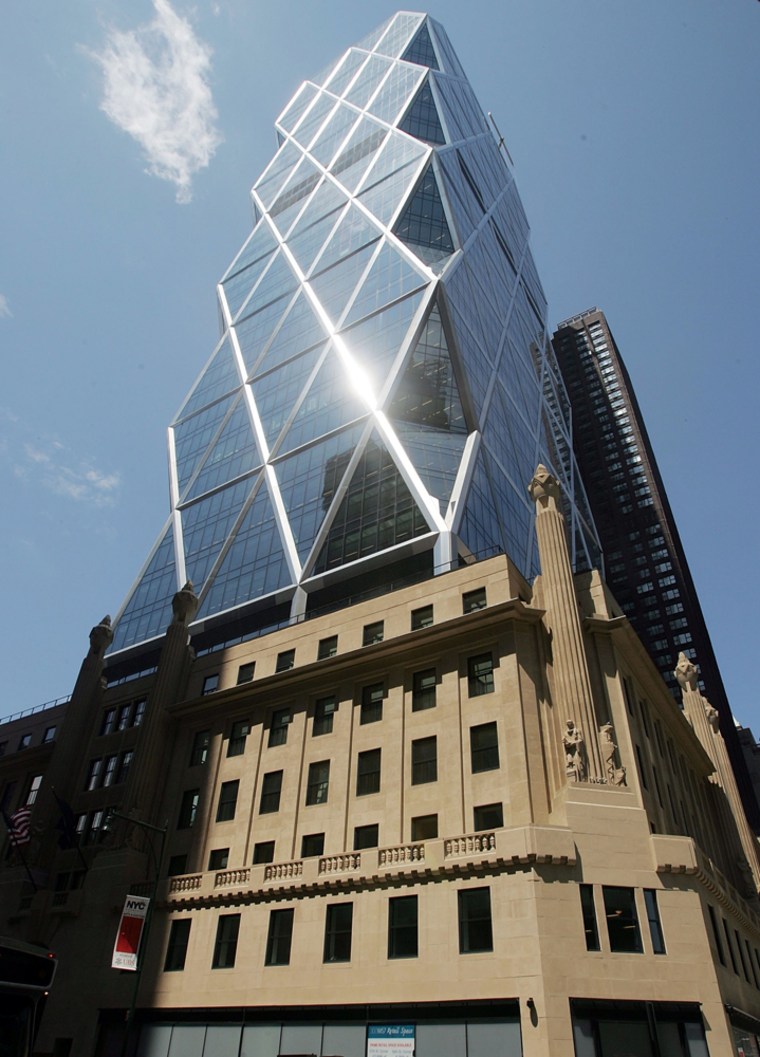Ten years ago, large-scale green building was still a pipe dream. Most of the designs were the architectural versions of horsehair shirts, neither very comfortable nor very pretty. Using less energy inherently meant making do with less — less heating, less cooling, less of the symbolism and grandeur that define great architecture.
Yet by the turn of the millennium green had become glamorous, and today it's even economical. The cycle of innovation for sustainable building technologies is now staggeringly short, given how long it takes to complete a building. In short, we are close to the tipping point at which green design becomes the default option for smart building.
Hearst Tower
At least that's what the Hearst Corporation found when it hired Norman Foster to design its new headquarters, which opened this spring in midtown Manhattan. "We wanted the best building we could possibly build, so we explored every bit of technology available, and that meant green technology," explains Brian Schwagerl, director of real estate and facilities planning. And Hearst wasn't alone. Broad demand for sustainable technologies has driven prices down and increased options. "The market came to a point where we could buy the materials at a cost that wasn't a huge uptick," says Schwagerl.
Rising out of Hearst's original, fortress-like headquarters, the building's distinctive "diagrid" structural frame — visible in the diamond pattern of the façade — required 20 percent less steel than a conventional perimeter steel frame, resulting in the saving of an estimated 2,000 tons of steel as well as the toxic byproducts of its production. For most of the year, a state-of-the-art heating, ventilation and air-conditioning (HVAC) system will use outdoor air for cooling and ventilation. As a result, the energy used and carbon dioxide emissions will be slashed to 22 percent less than the average office building of a comparable size in New York.
The result for Hearst is a gold rating — the first for a building in New York City — from the Leadership in Energy and Environmental Design rating program of the U.S. Green Building Council. Founded in 1995, the program has registered over 300 million square feet of space. Local governments, including New York and Chicago, have recently legislated LEED minimums for municipal buildings.
Momentum builds
Quietly competing with LEED is the Cradle-to-Cradle protocol, developed by architect William McDonough and chemist Michael Braungart. C2C considers the entire life cycle of a product, from manufacture to recycling; or, even better, "up-cycling." The first C2C home, a 1,623-square-foot, two-bedroom house in Roanoke, Va., will be completed next month.
And green even has a new (unofficial) spokesperson in Brad Pitt. This week the architecture-loving actor trumpeted the benefits of green building at a design competition for a low-energy apartment complex in New Orleans.
All this points to the ever increasing momentum of green design. The "Green Wonders of the World" slideshow (right) takes stock of the monuments completed so far. It celebrates the combination of high life and low energy by seeking out the buildings that both minimize their energy use and pack a symbolic punch. Think of the monuments that follow as symbols of possibility, often with an influence that belies their size.
